Antarctica. During the whole cruise I was looking forward to a certain landing: the visit of the volcanic island Deception Island with Whaler's Bay - a fascinating Lost Place in Antarctica. It should be our last landing during this trip, so that to my curiosity and anticipation of this landing a bit of melancholy mixed. Find out more about the Lost Place in Antarctica and what makes Deception Island so special in my article.
Table of Contents and Quick Navigation
Abenteuerliche Expedition – das Ehepaar Wilts mit der “Freydis”
Deception Island
Origin of the island
Landing in Whaler's Bay
Viewpoint "The Nipple"
The abandoned whaling station in Whaler's Bay
The world's most southerly trank cookery
Excursus: Whaling in the Southern Ocean
Research stations
Goodbye, Antarctica
Here you can find an overview of all reports from my Antarctic trip.
Unassigned, unpaid advertising. The article contains affiliate links.

Abenteuerliche Expedition – das Ehepaar Wilts mit der “Freydis”
My curiosity was fuelled by the reading of a captivating adventure by the extreme sailor couple Wilts. With their 15-m steel yacht "Freydis" they planned to spend the polar winter in the crater lake of Deception Island. But as is so often the case in the polar regions, things are different than planned. The couple is surprised by the violence of a polar storm, the boat is stranded and leaks. After a desperate fight against the waves and the penetrating water, the Wilts rescued themselves on the beach. They found shelter in the Argentinean research station, which was empty in winter. After some sleepless nights the first shock was over and the Wilts started to rescue everything important from the ship. Meanwhile this lay frozen on the beach, covered with a thick layer of ice. The couple got support from the surrounding research stations and were finally able to bring the Freydis back to life.
Book recommendation: Gestrandet in der weißen Hölle von Heide Wilts
A classic of sailing literature. Available at Amazon*
Fancy more polar literature? Then have a look here.
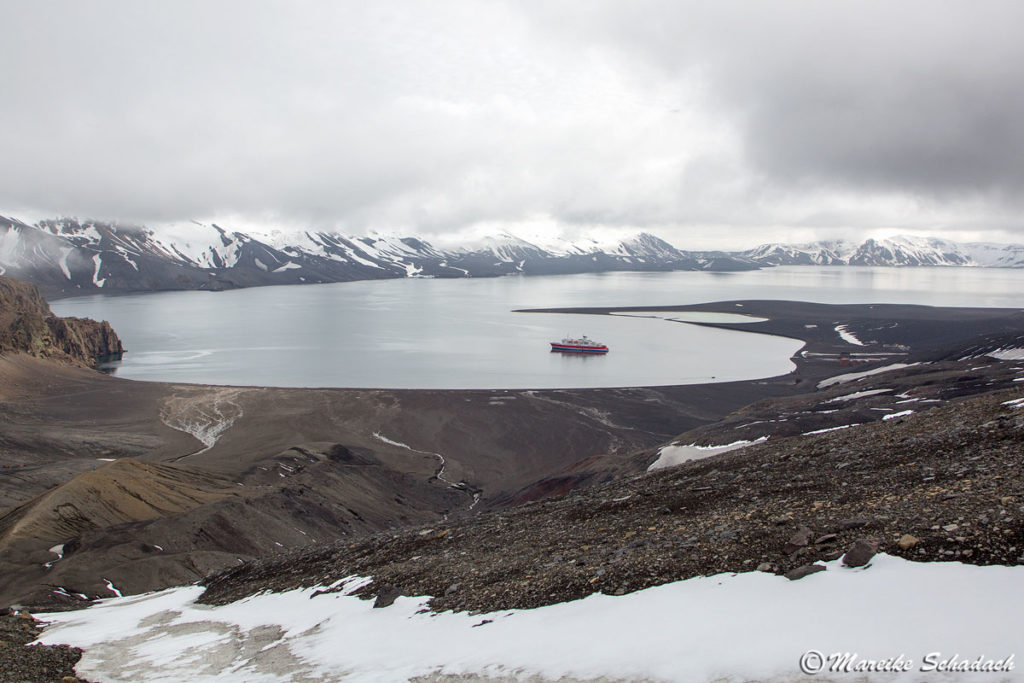
Deception Island
Deception Island belongs to the Southern Shetland Island and is located in Bransfield Street. The island measures about 13 by 14 kilometres and is about 98.5 square kilometres in size. Thus it is about as big as the island Sylt. Its highest elevation, Mount Pond, is 539 meters high.
The island has a lot to offer. And not only landscape, but also an eventful history. Therefore, it is today the most visited island in the Antarctic. Many cruise ships land here. Often even a bath in the warm springs is possible - so don't forget your swimsuit!

Origin of the island
The horseshoe-shaped island was created about 750,000 years ago. It is the edge of a caldera flooded by the sea, thus the summit area of an active volcano. It rises about 1.500 meters from the sea bottom and is currently in a resting phase. Due to the horseshoe shape, the island with its crater lake open to the sea forms a natural harbour, the Port Foster. This can only be passed through a strait about 400 metres wide, the so-called Neptune's bellows. At the edge of the crater there are hot springs, fumaroles and hot water lagoons.
Landing in Whaler's Bay
We're in luck. There is hardly any wind and the MS Expedition pushes its way through the narrow Neptune bellows without any difficulties. The strait widens and we reach our anchorage in Whaler's Bay. In front of us the bay spreads out with a somewhat morbid Lost Place panorama. As we approach, we see individual buildings on the beach, including an aircraft hangar of the British research station and the facilities of an abandoned Norwegian whale factory: several huge rusty pots for cooking and storing whale oil.
Our Zodiac lands on the sandy beach and we are greeted by a few bridled penguins, a Weddel seal and a sea elephant. Old wooden boats lie on the beach, half buried in the sand. Steam rises from the water and gives everything a surreal atmosphere. The steam comes from warm springs. Due to the volcanic activity, the water temperature is said to be around 10 °C in some places.
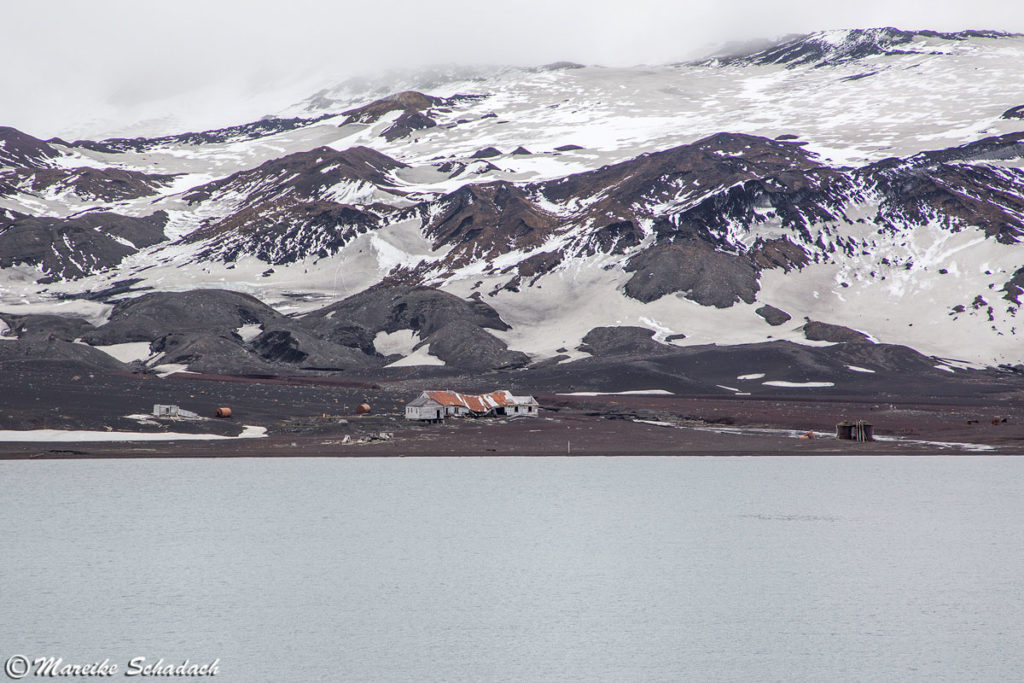
Viewpoint "The Nipple"
But before I go to the Lost Places it goes up to the crater rim. Our destination is the viewpoint "The Nipple". After two rather motionless weeks I am happy about this little hike. Unfortunately we never arrive at the viewpoint, because when we are almost at the top fog comes up. It is so dense that we have to turn back and march back on the same way. But on the way I make a very special discovery: lichens and mosses grow on the stony ground - the first plants I see in Antarctica. Only afterwards do I learn that even parts of the island are closed to visitors in order to investigate the reintroduction of plants on the volcanic ash.
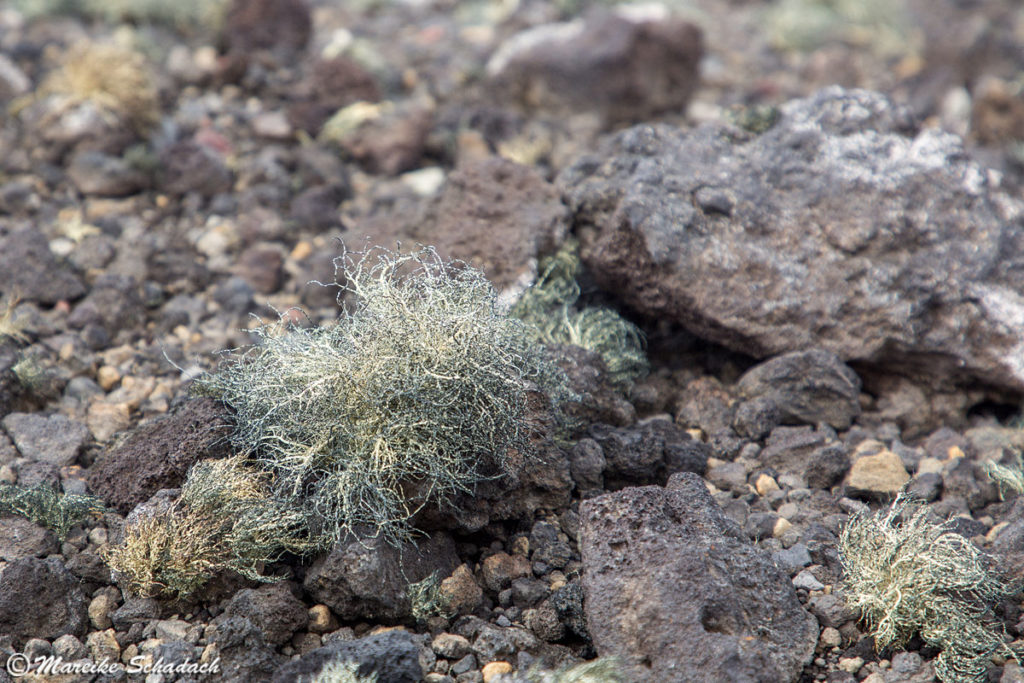
The abandoned whaling station in Whaler's Bay
The rusty tran cauldrons get bigger the closer I get. No whale fat has been cooked or stored here for a long time. After the processing of the whales took place directly on factory ships intended for it, the whale processing station "Hektor" in the Whaler's Bay was closed. Instead, skuas have now built their nests here. On the ground in front of the first boiler two chicks run around searching.

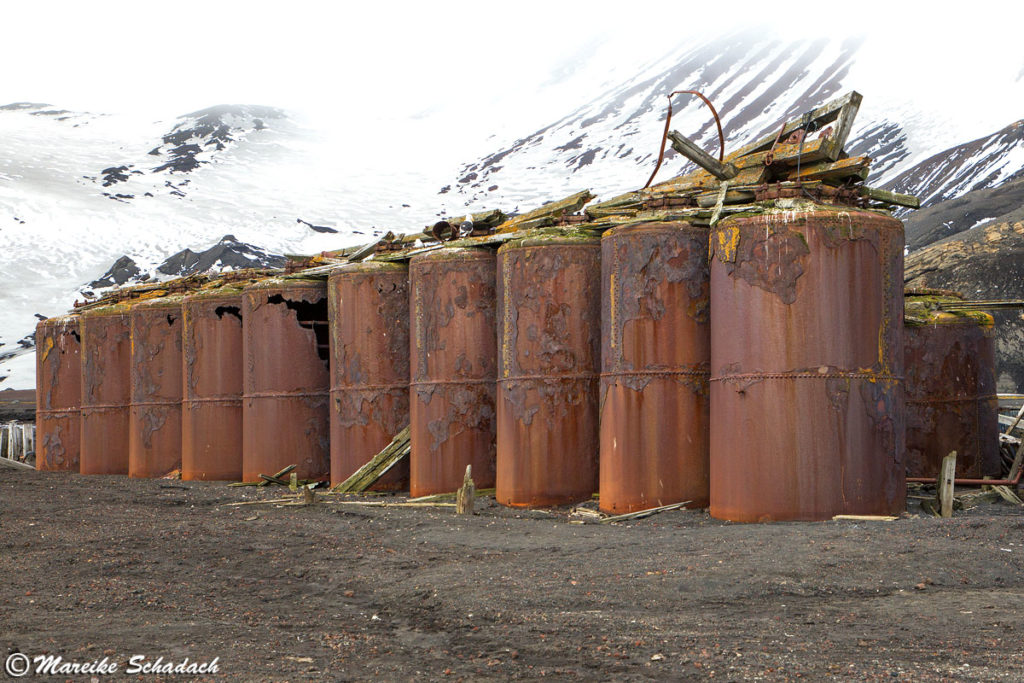
Whales were processed in Whaler's Bay for almost twenty years. The first factory ship came in the winter of 1906/07 and processed the hunted animals. So many animals were hunted that only the valuable blubber, i.e. the fat-rich skin layer, was processed. Everything else went overboard and accumulated in the crater lake. Thousands of walkadavers rotted here. In order to prevent this, the construction of the Trankocherei was started in 1912. The most southern trancooking plant in the world
The world's most southerly trank cookery
From 1912 to 1931, the Norwegian Hvalfangerselskabet Hektor A/S ran the southernmost trancooking plant in the world here, the remains of which we can now see. Overturned, rusty tanks dominate the beach. They served as intermediate storage for the whale oil and as storage for fuel. Shortly afterwards, ten rusty steam cookers are lined up. These were equipped with whale meat and whale bones. The hot steam then dissolved the fat from the meat and bones. The oil was then separated from the water.
Behind the buildings and remains of the factory there is a cemetery whose 35 graves date back to the time of the whaling station. During the volcanic eruptions in the 1960s, however, the cemetery was largely buried. Also most of the bones of the Walkadaver were covered with ash. At the beach of Whaler's Bay there are only a few whale bones left.
The remains of the whale processing station were placed under protection as "Historic Site and Monument No. 71" in 1995 and supplemented by the remains of the British research station in 2003. The basis for this is the Antarctic Treaty.
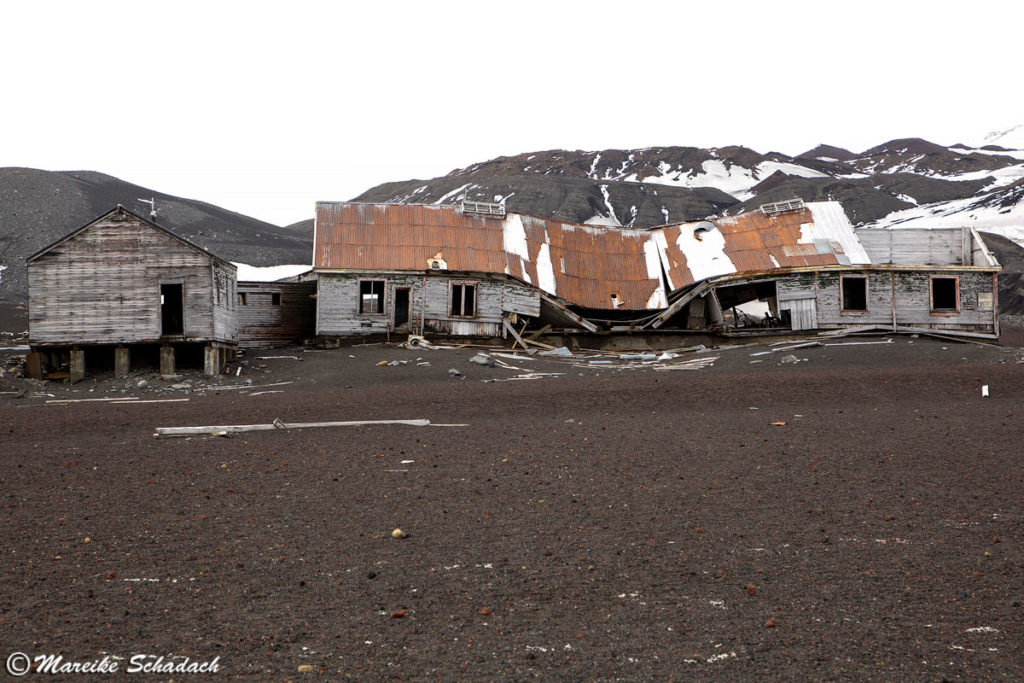
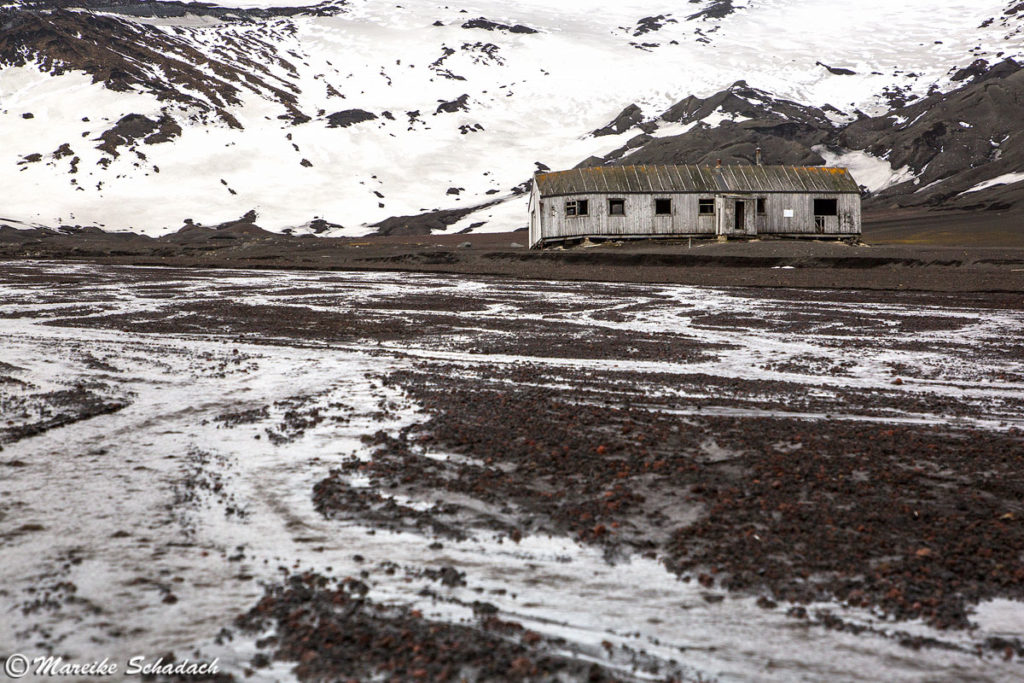
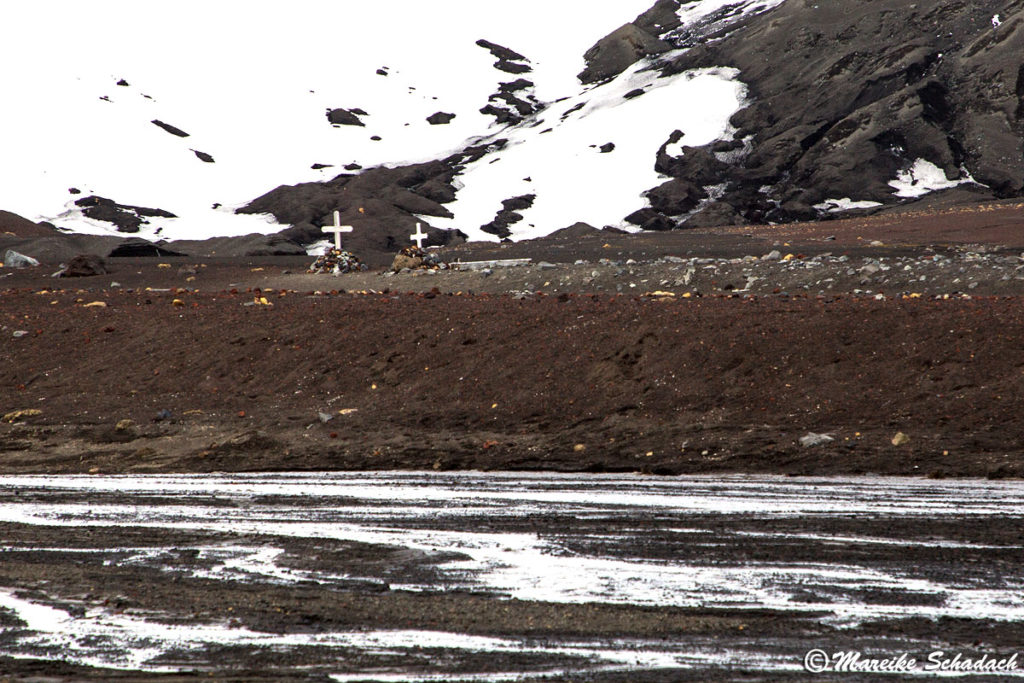

The remains of the old whale factory and the British research station on Deception Island are impressive monuments - a real lost place in Antarctica. I very much welcome the fact that they are protected as historic sites. And - as monuments should do - they made me think and I wanted to know more about whaling in the Southern Ocean.
Excursus: Whaling in the Southern Ocean
Since 1904, about 1.5 million whales have been caught in the Southern Ocean. According to IWC estimates, the whale population has fallen to one tenth today. And what about whaling in the Southern Ocean today? Japan was the last nation to engage in whaling in the Southern Ocean. However, under the guise of science, because commercial whaling has been banned since 1986. In addition, the Southern Ocean was declared a whale sanctuary in 1994. In 2014, the International Court of Justice ruled that Japanese whaling was not scientific and therefore illegal. Under increasing pressure from marine conservation organizations, including Sea Shepherd, Japan announced in 2018 that it would stop whaling in the Southern Ocean. Hopefully, Antarctica will become a whale-free zone by the 2019/20 season. A success for whale conservation! However, in July 2019 Japan will leave the IWC and resume commercial whaling in its own waters.

Research stations
The first research station on Deception Island was built in 1944 by the British in Whaler's Bay. During the volcanic eruption in 1967, the British Antarctic Survey station and the Chilean research stations at Pendulum Cove were severely damaged. The British tried to rebuild their station. After another eruption the station was finally abandoned in 1969. Both times the researchers were evacuated by the Chilean ship Pilato Pardo. The last volcanic eruption so far took place in 1970.
Today, remains of the buildings still stand in the bay and protrude from the ash layers of the last volcanic eruptions. All buildings are now in danger of collapsing and must therefore not be entered.
Argentina (since 1948) and Spain (since1989/90) also operate research stations on Deception Island. However, these are only occupied in summer.

Goodbye, Antarctica
I could have walked between the old buildings forever. But everything has come to an end and I return to the ship with the last Zodiac. So we say "Goodbye, Antarctica" and many of us mean this literally. It was December 31st. The celebrations on New Year's Eve and Prosecco make it easier for us to say goodbye to Antarctica. And we celebrated and danced into the new year. "Dance the Drake!" And on the way back over the Drake Passage nobody got seasick this time.
Book Recommendations for Antarctica
Do you want to know where the journey is going? Then I can recommend this travel books* to you.
You can order the travel guides on Amazon by clicking on the pictures. If you buy a product via an affiliate link, I get a small commission and you help me to keep filling Fernweh-Motive with interesting articles. This does not make the product more expensive for you.
Have you ever been to Antarctica in a ship yourself? How did you like it and what were your highlights? Do you have any questions about my article or any other tips for a trip to Antarctica? If so, please write me a comment!
Do you want to know when there are new articles on my blog? Then follow me on Facebook, Pinterest or Instagram. I would also be very happy if you share my article with your friends.





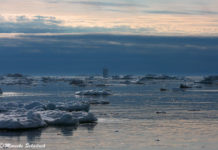
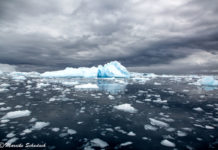
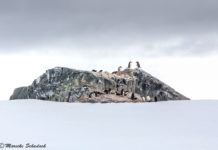
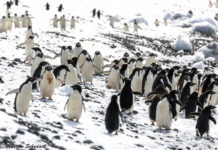
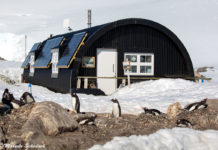
Am besten segelt man in die Antarktis. Ich empfehle Euch die Bark Europa, ein Dreimaster aus Holland, der u.a. auch zu Deceiption Island fährt. Muss sagen, das war ein bewegender Moment dort zu stehen und im warmen, vulkanischen Kraterwasser zu baden